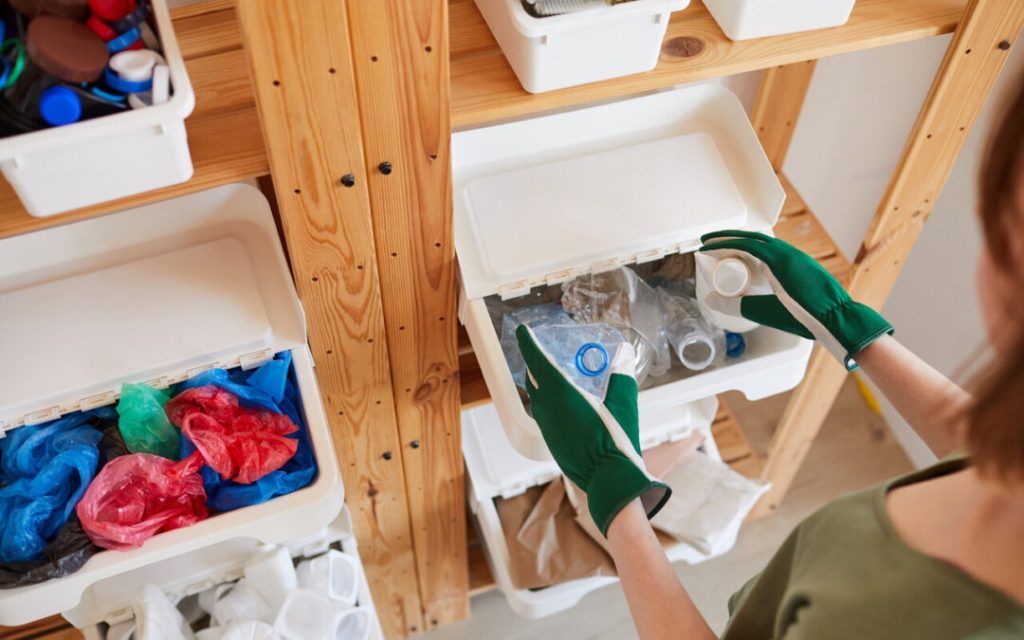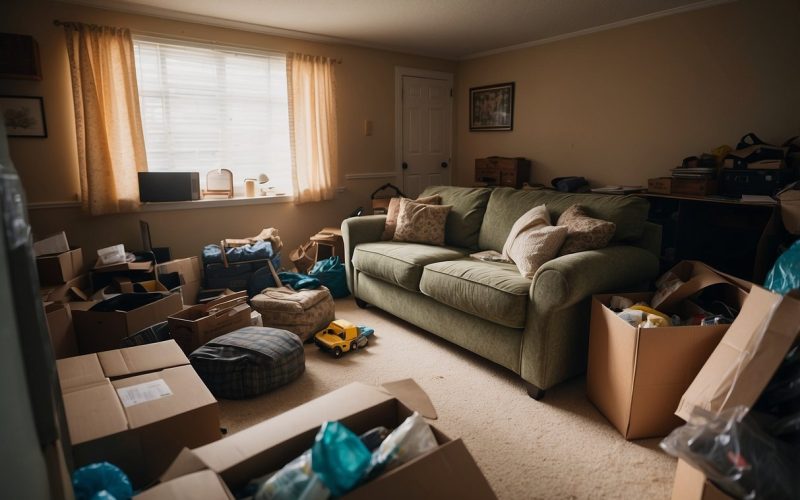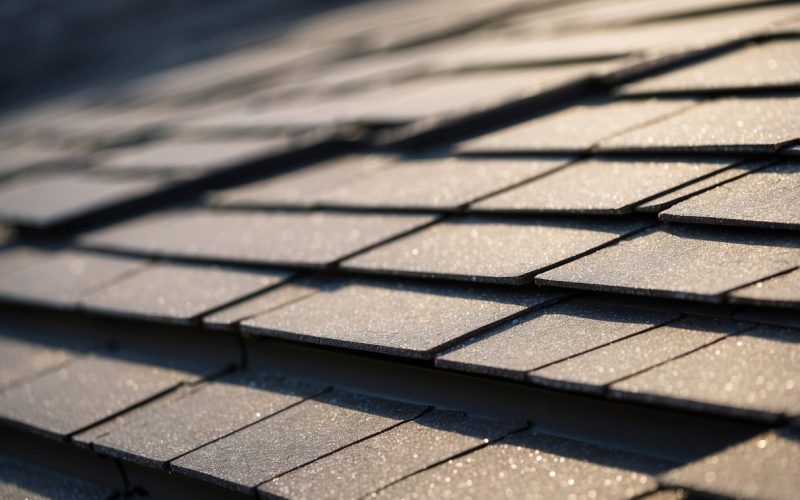A whole home cleanout can seem like a big task, but it doesn’t have to be overwhelming. Whether you’re moving, downsizing, or just ready to declutter, clearing out your home can bring a sense of relief and a fresh start. Using a residential cleanout service can save time and make the process smoother.
Decluttering your space not only improves your home’s appearance but also has mental health benefits. An organized home can reduce stress and increase productivity. In the event of a death, planning an estate cleanout before you do the work can save you time and frustration. Considering an eco-friendly approach to your cleanout helps the environment while you declutter.
Professional cleanout services often provide a comprehensive solution, handling everything from sorting and removal to disposal. These services can manage large items and ensure proper disposal, including recycling and donations, which helps keep unnecessary waste out of landfills.
Planning Your Whole Home Cleanout
To plan a whole home cleanout, you need to assess the extent of work required, set clear goals and deadlines, and choose a licensed and insured cleanout service that fits your budget.
Assessing the Scope of Work
Start by walking through each room to identify areas that need attention. Make a list of items to keep, donate, sell, and dispose of. Track the rooms’ sizes to estimate the time and effort needed.
Create a table to keep notes:
|
Room |
Items to Keep |
Items to Donate |
Items to Sell |
Items to Dispose |
|---|---|---|---|---|
|
Living Room |
Sofa, TV |
Old books |
Coffee table |
Broken lamp |
|
Bedroom |
Bed, dresser |
Clothes |
Jewelry |
Old mattress |
Assess the quantity of large items and potential trash. This will help determine the type of cleanout service required.
Setting Goals and Deadlines
Establish clear goals for the cleanout. Decide on a timeline for each phase, such as sorting, discarding, and cleaning. Create short-term and long-term goals.
For example:
- Week 1: Sort items in the living room and bedroom.
- Week 2: Donate and sell items, confirm cleanout service.
- Week 3: Cleanout service handles removal and deep cleaning of rooms.
Ensure deadlines are realistic and allow some flexibility. This will keep the process manageable and reduce stress.
Selecting the Right Cleanout Service
Research local cleanout services that are licensed and insured. Verify their credentials and read reviews. Request estimates from several services to find an affordable option.
Key points to consider:
- Availability: Ensure they can work within your timeline.
- Services: Check if they handle all types of items.
- Costs: Compare prices and choose a service that provides good value.
Ask the cleanout service about their disposal and recycling policies. Ensure the service is transparent about fees and processes. This will help in making an informed decision and ensuring a smooth cleanout experience.
Organizing Items for Removal

When cleaning out a whole home, it’s crucial to organize items for smooth removal. This helps in distinguishing between what can be donated, what needs to be junked, and how to manage furniture and other household goods effectively.
Sorting Household Goods
Starting with a proper sorting process is key. Begin by categorizing items into keep, donate, and junk piles. This can be done room by room to keep things manageable.
Clutter should be sorted first, identifying what’s no longer needed. Use boxes labeled clearly. This method helps in speeding up the sorting process and reduces confusion.
Furniture removal requires extra attention. Decide if pieces can be reused, donated, or if they need to be discarded. For large items, it’s wise to contact professionals like Junk King, who can help with heavy lifting and disposal.
Identifying Items for Donation
Many items still have value and can benefit others. Common things to consider for donation include clothes, books, and usable household goods.
Local charities or organizations may have guidelines on what they accept. This ensures that only useful items are given. Items like old toys, small appliances, and decor can often be donated.
Reach out to donation centers beforehand to confirm they will take what you have. Some centers even offer pickup services which can simplify the process.
Preparing for Junk Removal
Junk removal focuses on items that can’t be donated or kept. Clutter like old electronics, broken furniture, and non-recyclable materials typically fall into this category.
It’s beneficial to hire professionals like Junk King who specialize in efficiently and safely removing junk. They handle proper disposal, including recycling when possible.
For large-scale removal, plan a specific day for the junk collection. Make sure all junk is easily accessible to avoid delays and make the process seamless.
Eco-Friendly Disposal Options
Choosing eco-friendly disposal options for a whole home cleanout helps reduce waste. It can also support local communities and conserve natural resources.
Recycling Options and Benefits
Recycling helps keep reusable materials out of landfills. Plastics, glass, metals, and paper are common items for recycling. Local recycling centers often accept these types of materials.
Recycling benefits the environment by minimizing waste. Less waste means fewer landfills. Energy savings result from reusing materials instead of creating new ones. For example, recycling aluminum saves about 95% of the energy needed to make new aluminum from raw materials.
Some communities offer curbside recycling services, making it convenient to participate. Knowing what can be recycled is key. Most local programs provide a list of accepted items, ensuring proper disposal.
Donating to Charities
Donating items to charities is another eco-friendly disposal option. Many organizations accept gently used furniture, clothing, and household goods. Donations can help people in need and reduce waste.
Local charities, shelters, and thrift stores are often in need of donations. They can reuse items, keeping them out of landfills. Some organizations even offer pickup services for larger items, making it easy to donate.
Donating also supports community programs. Nonprofits often use proceeds from sales to fund services like food banks, housing assistance, and job training. It’s a great way to help the environment and support local initiatives at the same time.
Using eco-friendly disposal options benefits both the environment and the community. Small efforts like recycling and donating make a big difference.
Working with Professionals

Hiring professionals can simplify a whole home cleanout. Key points include selecting a reliable junk removal service and understanding the costs involved.
Choosing a Junk Removal Service
When choosing a junk removal service, look for licensed and insured companies. This ensures that they are operating legally and can cover any damages. Read online reviews to gauge their reliability and punctuality. Ask about their process—some may offer full-service cleanouts, while others might focus on specific items.
Check if the service recycles or donates items to reduce waste. This is important for environmentally conscious homeowners. Also, ensure the company is transparent about what they will and won’t remove to avoid surprises.
Understanding Service Pricing
Understanding service pricing is crucial. Many junk removal services offer upfront pricing, which can include an on-site estimate. It’s important to know how they charge—typically by volume (cubic yards) or by the truckload. Be clear if there are additional fees for heavy items like appliances.
Compare rates from multiple providers. Look for any hidden fees, such as disposal charges or surcharges for late appointments. Knowing the full cost helps avoid unexpected expenses, ensuring that the cleanout process stays within budget.
Use the information to make an informed choice and ensure the service meets your needs efficiently.
Special Considerations
When handling a whole home cleanout, some key points to focus on are dealing with hazardous materials and managing cleanouts under special circumstances like estates, foreclosures, and divorces. These situations need extra care and attention for safety and legal reasons.
Dealing with Hazardous Materials
Hazardous materials can include items like old paint, cleaning chemicals, asbestos, and electronics. For safety, these items need to be handled, stored, and disposed of properly.
Old Paint and Chemicals: Do not pour these down the drain. Use special disposal services or community hazardous waste collection events.
Asbestos: Only professionals should handle asbestos. DIY removal can be dangerous.
Electronics: Take electronics to recycling centers. Many electronics contain harmful substances like lead and mercury.
Cleanout in Special Circumstances
Foreclosure Cleanout: These often involve removing large amounts of debris quickly. Items left behind can range from furniture to personal belongings. Speed is crucial, as the property might need to be ready for sale soon.
Divorce: Cleanouts during a divorce can be sensitive. It might involve splitting belongings fairly and ensuring emotional needs are considered.
Estate Cleanout: This is often needed when a family member passes away. It may require sorting through valuable and sentimental items. Respect and time are essential during this process, as family members might need to make decisions about what to keep or donate.
Financial and Legal Considerations
When doing a whole home cleanout, it’s essential to think about financial and legal issues.
First, consider the cost. Hiring professionals like real estate agents or property managers can be expensive. It’s smart to compare prices and get quotes from a few companies. Some banks may also offer loans or financing options to help cover these costs.
Dealing with Accounts
Close or transfer any utility accounts. This includes electricity, water, and internet. Make sure all bills are paid to avoid any legal trouble.
Real Estate and Rentals
If selling, work with a real estate agent. They will handle things like listing the property and negotiating prices. For rentals, landlords and tenants need to follow lease agreements. Property managers can coordinate the cleanout with tenants and landlords to make it smooth.
Legal Documents
Check for important documents. This includes wills, deeds, and any other legal papers. Secure these documents to prevent identity theft or other legal issues.
Selling or Donating Items
You may want to sell or donate furniture and household items. Some items may need appraisals for their value. Always keep records of sales and donations for tax purposes.
Lease Agreements
If tenants are involved, it’s important to follow the lease agreements. Landlords should give proper notice. Tenants should leave the property in good condition as stated in the lease.
Keeping these financial and legal considerations in mind helps make sure the whole home cleanout goes smoothly and legally.
Maximizing the Value of Your Property
Enhancing your property’s value involves cleanout tasks that improve both the exterior appearance and interior condition.
Improving Curb Appeal through Cleanout
First impressions matter. The outside of your home is what potential buyers see first. Curb appeal is crucial for attracting buyers and making a positive impact. Remove any clutter from the yard, including toys, tools, and debris.
Consider hiring cleaning services to power wash driveways, walkways, and sidings. Trim bushes, mow the lawn, and plant flowers to add color and life. Clean windows and ensure they shine.
Small tasks like painting the front door or adding new house numbers can make the home look well cared for. A neat and inviting exterior sets the tone for the rest of the property.
Deep Cleaning and Minor Repairs
Inside the home, a deep cleaning is essential to brighten rooms and make the space feel fresh. Hire professionals or devote time to scrubbing floors, walls, and appliances. Pay attention to details like light fixtures and vents.
Minor repairs can also boost property value. Fix leaky faucets, squeaky doors, and damaged walls. Consider repainting rooms in neutral colors to appeal to a broader audience.
Clearing clutter from storage spaces makes them feel more spacious. Organize closets, cabinets, and the garage. A clean, bright, and well-maintained interior can significantly improve buyers’ perceptions and increase the likelihood of a sale at a good price, providing a strong ROI.
Final Stages of the Cleanout Process
The final stages involve careful review and removing remaining items from the home. This ensures that no valuable items are missed, and garbage is properly disposed of.
Conducting a Walkthrough
A comprehensive walkthrough is essential.
Start by inspecting each room. Look in cabinets, closets, and under furniture. This helps to verify that nothing has been forgotten. Use a checklist to keep track of each space examined.
During the walkthrough, separate items into categories like keep, donate, and trash. This organization makes the next steps more efficient. Make sure to keep track of what goes where.
Check for any damage to the home that might need fixing. Note down any repairs needed or areas where garbage might have been missed.
Offsite Removal and Transportation
Transporting items offsite is the next step.
Rent a truck or hire a removal service. This depends on the amount of stuff and distance to the disposal location. Ensure to schedule this step in advance.
For larger items like furniture, ensure they are properly disassembled if necessary. Secure everything in the truck to prevent damage during transport. Check local disposal facilities and donation centers for specific requirements or rules.
It’s vital to properly dispose of hazardous materials like chemicals or electronics. Check local regulations on how to handle these items to avoid fines or environmental harm.
Frequently Asked Questions
There are several aspects to consider when planning a full home cleanout, including cost, options for elderly services, finding specialized companies, best practices, and possible discounts or free services.
How much does it typically cost to have an entire home cleaned out?
The cost for a whole home cleanout can vary widely. Most companies charge based on the volume of items and the time required. On average, costs can range from $500 to $2000, depending on the size of the home and the amount of stuff to be removed.
What are the options for elderly home cleanout services?
Specialized services for elderly home cleanouts often include additional support. These services can offer packing, sorting, and even help with deciding what to keep or donate. Look for companies that have experience working with senior citizens and can handle sensitive items with care.
How does one find companies that specialize in whole-home cleanouts?
To find companies that specialize in whole-home cleanouts, start with a local search online. Reading customer reviews can provide insight into the quality of work. Also, asking for recommendations from friends or family can be helpful. Local real estate agents might also know reliable companies.
What are the best practices for conducting a full house cleanout?
A successful full-house cleanout involves several steps. Begin with a plan that includes timelines and specific goals. Sort items into categories like keep, donate, sell, and dispose of. Using checklists can help keep track of progress. Label boxes clearly and handle hazardous materials safely.
Can you receive a house cleanout service for free or at a discounted rate?
In some cases, yes. Some charitable organizations might offer free cleanout services in exchange for donations. Seniors, veterans, and those with specific financial hardships might also qualify for discounted or free services. Always inquire about available discounts or special programs.
What steps should be taken to efficiently empty a house full of belongings?
Start by organizing items room by room. Declutter and sort items as you go. Prioritize high-traffic areas first. Make use of available resources like dumpsters, donation centers, and recycling programs. Enlist help from friends or professionals to speed up the process. Stay focused and adhere to your plan for best results.











